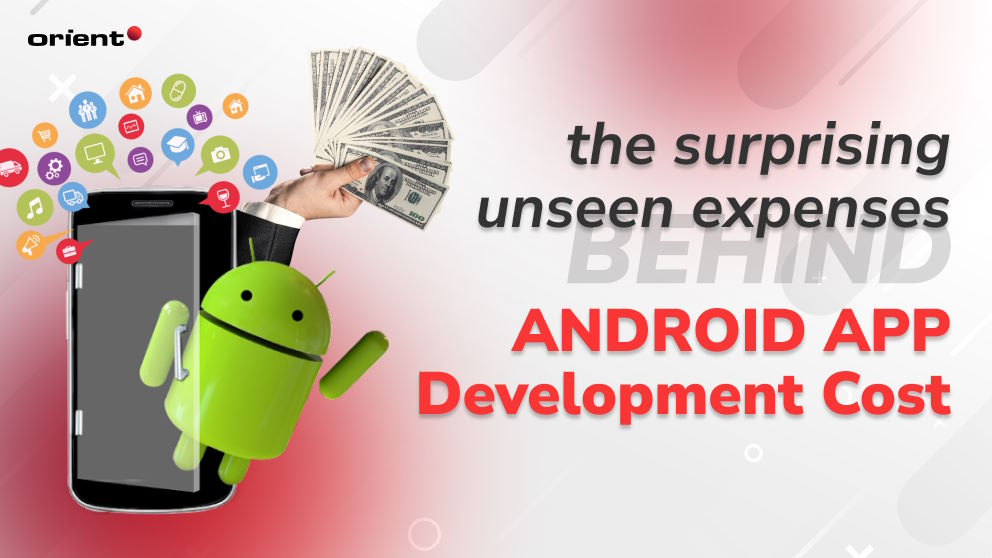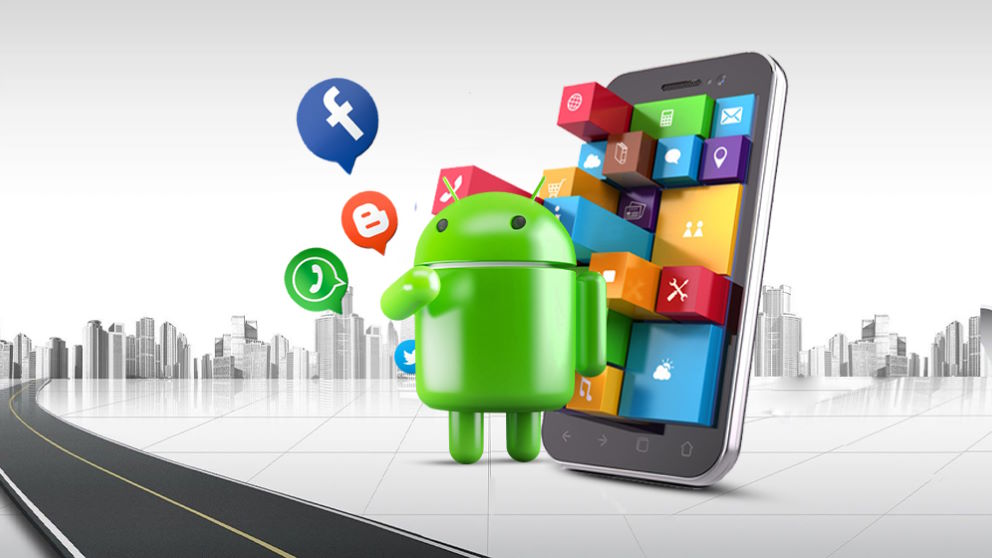The Surprising Unseen Expenses Behind Android App Development Cost

Content Map
More chaptersThe global mobile app market was valued at over $154 billion as of 2019 and is projected to grow to more than $407 billion by 2026. As we begin to adapt to the reality after the strong impact of the COVID-19 pandemic, it has become evident how vital digital transformation has become. The presence of mobile apps gradually becomes an indispensable factor, positively impacting human life.
Among the multiple platforms available, iOS and Android are the two most common mobile operating systems worldwide, with a huge number of users. Regarding statistics, in 2022, Android dominated over 70 percent of the entire mobile OS market worldwide, outpacing its biggest competitor, Apple. The abundant user base creates favorable conditions and a solid basis for business owners to deploy their own Android mobile app development projects.
However, estimating the Android app development cost specifically can be challenging due to various reasons, especially with the emergence of hidden expenses. To limit budget overruns in the Android app development process and ensure ROI software, here we give you a comprehensive breakdown of the different unseen cost components that may surprise you.
Most Visible Factors Affecting Android Mobile App Development Costs

Visible factors refer to all the factors that can be easily observed or identified and are readily apparent. These are the consumptive aspects of the Android app development process that businesses can easily spot. Many people say iOS app development often costs more than Android. What is the truth? No matter what field your project specializes in, the visible factors below are undeniable.
App Features and Functionality
There are many elements that make an Android mobile app complex, and the requirement for the number and complexity of its features and functionalities is one of them. Depending on the customer base and types of software that the business intends to provide, app features will differ from project to project. The more complex or advanced the features are, the more resources companies consume.
For example, while an education app only requires simple user authentication, such as email verification and social media login integration, a banking app containing a lot of customer security information requires two-factor authentication, which can result in additional development time, effort, and budget.
User Interface and Visuals
The user interface and visual elements of any app design are strongly influenced by the concept of user journeys. Based on the general behavior of target users, some apps may have straightforward and simple designs, while others require more intricate and complex UI/UX elements. A shorter user journey positively impacts navigation and performance as businesses need far fewer app screen designs than longer ones. Fewer screen designs mean more open requirements for content, images, and visual resources, decreasing design complexity.
Besides, if your business needs to tailor the app’s design to align with specific branding guidelines or visual requirements, which can cause the creation of typography and layouts, this can also lead to additional Android app development costs.
Development Team Expertise and Location
Highly skilled app developers typically command higher rates due to their expertise and ability to deliver high-quality work. The higher rates related to experienced professionals reflect their value commitment to the project and the assurance of top-notch development. As they understand the latest software development trends, frameworks, and programming languages, industry experts have the ability to handle challenging technical requirements and bring value to the project.
The development team location can also affect the Android app development cost, especially for businesses using dedicated software teams or IT staff augmentation services from outsourcing companies. Note that offshore developers from Southeast Asian countries like Vietnam generally have higher command rates compared to those in Western Europe because of the difference in living standards in the countries.
Testing and Quality Assurance
Comprehensive software testing is a crucial process for an Android app’s success. Businesses cannot launch products to the market without thoroughly conducting functional testing, usability testing, and performance testing. However, this process is difficult and requires more budget than you think.
Not only is the budget for hiring or allocating experienced testers and quality assurance professionals, but businesses also have to invest in testing tools, software licenses, hardware devices, and infrastructure for creating test environments, which all add fees to the overall cost.
Hidden Factors Contributing to Android App Development Cost
Basic app development cost factors are just the “tip of the iceberg,” as there are dozens of hidden factors contributing to Android app development costs. Hidden factors are elements that may not be immediately visible or obvious but still have a strong impact on the overall expenses. If simply estimating software development costs based on apparent aspects, businesses can easily fall into budget overruns. How much does it cost to develop an Android app? Watch out for the surprising unseen factors below.
Google Play Store Licensing Fees
It is not free for a company to publish an app on the Google Play Store, the official app store for Android devices. In order to have the right to upload applications to the app store, new users are required to pay a fixed one-time registration fee equivalent to $25 used to create an account on the platform. Just by opening an account once, developers are allowed to publish as many apps as they want under their account.
Additionally, there may be charges for annual app store subscriptions or fees for certain developer services and features. These fees vary depending on the service package and features you choose to utilize. It is worth noting that the exact fees associated with the Google Play Store may change from time to time. Please consult the official Google Play Console documentation and stay updated with the latest news to estimate and plan for these costs accurately.
App Maintenance Cost
It is impossible to develop an Android app that never generates errors and is always up to date. As technology evolves, new user expectations and market trends change, and data volumes are constantly growing, businesses need to conduct regular maintenance and updates to enhance the user experience and address any issues or bugs that may arise.
As ongoing maintenance involves a wide range of tasks such as optimizing code, adding new features, improving performance, fixing bugs, etc., they require investment in specialized human resources and specialized tools. Although the maintenance process takes place regularly, which may have a profound impact on the final app development costs, neglecting updates and maintenance can lead to outdated systems and performance issues. Letting this situation go on for a long time can lead to a decline in user engagement, negative reviews, and even loss of users.
User Acquisition and Marketing
Don’t use up all your budget for the development process and forget about attracting users and creating awareness about the app to drive downloads and engagement. Marketing efforts and user acquisition campaigns are one of the key strategies to achieve this, but they also come with additional costs.
In order for the product’s image to reach a large range of potential customers, businesses need to invest heavily in advertising campaigns across different channels. Such processes may require budget allocation for creative assets, campaign management tools, ad spending, content marketing, influencer collaborations, email marketing, public relations, and partnerships. Once you have attracted the attention of customers at an early stage, maintaining marketing activities also contributes to the ongoing cost of app development.
Technical Debt
Technical debt is a concept used to describe cases where developers take shortcuts or make trade-offs during the development process to achieve quicker delivery and meet tight deadlines. Since it can solve certain business problems in the initial phases, this kind of debt can lead to accumulated drawbacks that may need to be addressed and refactored in the future, as well as hidden costs in the long run.
As new requirements arise, both eliminating technical debt and investing the budget in new goals can easily lead the business to financial exhaustion. More specifically, it can hinder progress and increase development time and effort. Despite developers’ burnout, they are forced to spend additional resources to reorganize or rewrite code sections that are inefficient or difficult to extend. Errors and cyber security risks arise due to the rush to publish an app in the early stages, requiring time, budget, and effort from across the organization to address.
How to Simplify Calculating Development Costs for Android Apps

It is difficult to accurately calculate Android app development costs as it depends on many different factors such as the app’s complexity, required app features, the development team’s hourly rate, user interface and visuals, etc. Fortunately, there are effective methods for companies to simplify the process of calculating the Android mobile app development cost.
Use App Development Cost Calculators
The easiest way to quickly determine the app development budget required for a specific project is by taking advantage of different types of cost calculators. By asking a series of questions to gather some necessary information about your Android mobile app, such as the app’s features, design requirements, and other specifications, this tool provides an estimated cost based on the inputs.
Currently, there are a myriad of app development cost calculators available for businesses to choose from on the market. As most of them are free, it is worth to give them a try. While the cost estimation offered by free tools may not be 100% accurate, they can give companies, regardless of size, a ballpark figure to work with and help make informed decisions about budgeting and resource allocation.
Consider the Hourly Rate
The formula for calculating the development cost is usually the number of hours multiplied by the hourly rate. In order to have the necessary data to use for this method, businesses need to determine the number of hours it will take to develop their Android app development project.
Note that hourly rate varies depending on factors such as the region, experience level of the development team, and the type of development (hiring a freelancer or partnering with a mobile app development company), which all ultimately make a difference in price from projects to projects.
Get Quotes from Development Companies
In case a business needs to use services provided by third parties, such as software outsourcing services, it is entirely possible to request quotes from potential development companies to use for the Android app development cost breakdown process.
You can provide them with your app requirements and ask for a detailed cost breakdown based on their hourly rates and estimated hours. Obtaining multiple quotes, on the one hand, helps businesses compare the pricing and find the most suitable partner; on the other hand, it gives a better understanding of the potential cost involved in the Android mobile app development process.
Android App Development Cost: No General Formula Exists
Businesses can obviously find detailed tables about Android app development cost breakdown that appear everywhere online. However, it should be noted that these references are not highly accurate and should only be used as a general guide for two main reasons. First, each mobile app development project is unique, and the actual cost can vary based on different natures and requirements. Second, each third-party vendor offers service packages with different commitments at multiple price points, leading to diversity in development prices.
So, instead of calculating Android app development cost simply based on a general formula, use reference tables as a starting point for estimation and make sure to include a deep understanding of your own Android app, thereby correctly identifying the factors affecting the final financial strategy.
It is always recommended to consult with development experts and agencies to get a more accurate for your particular project. As an outsourcing partner operating for decades in the technology field, Orient Software not only brings successful solutions to clients worldwide but also acts as a consultant, providing valuable strategies and advice in Android development to companies. Whether your needs are met, connect with us now and bring your project from better to best.







